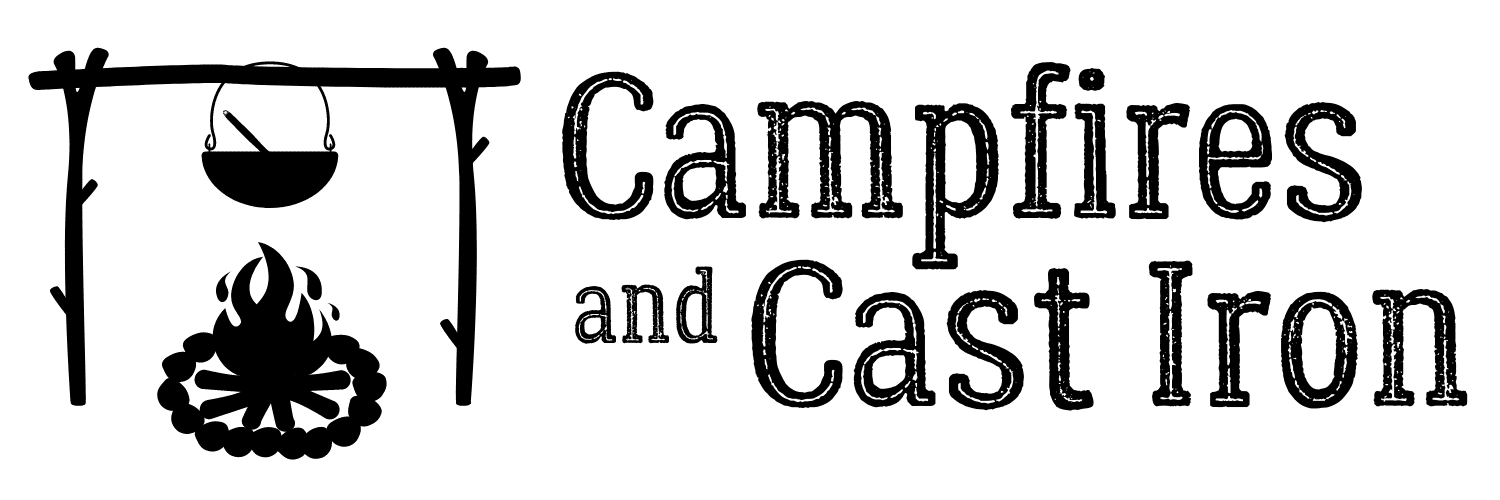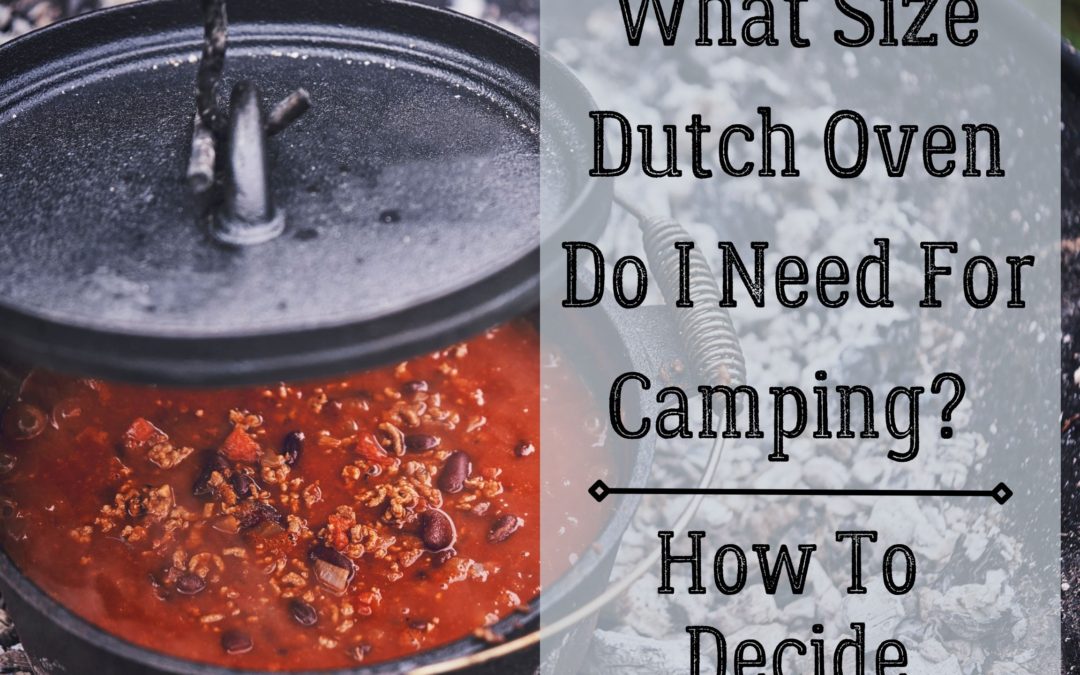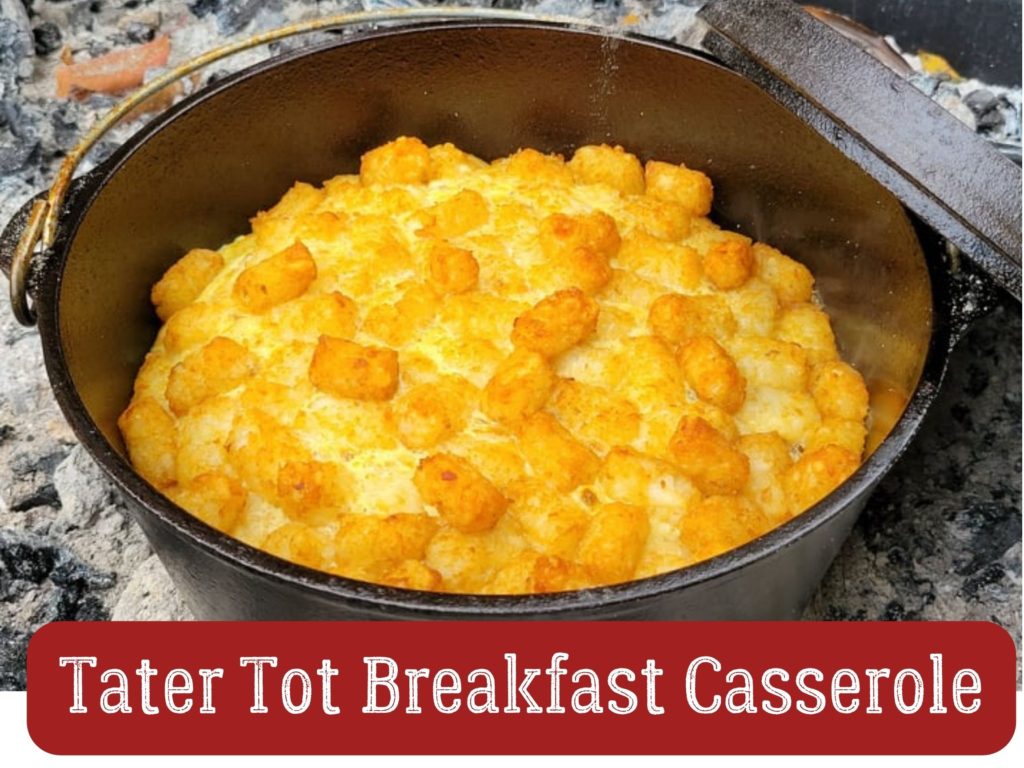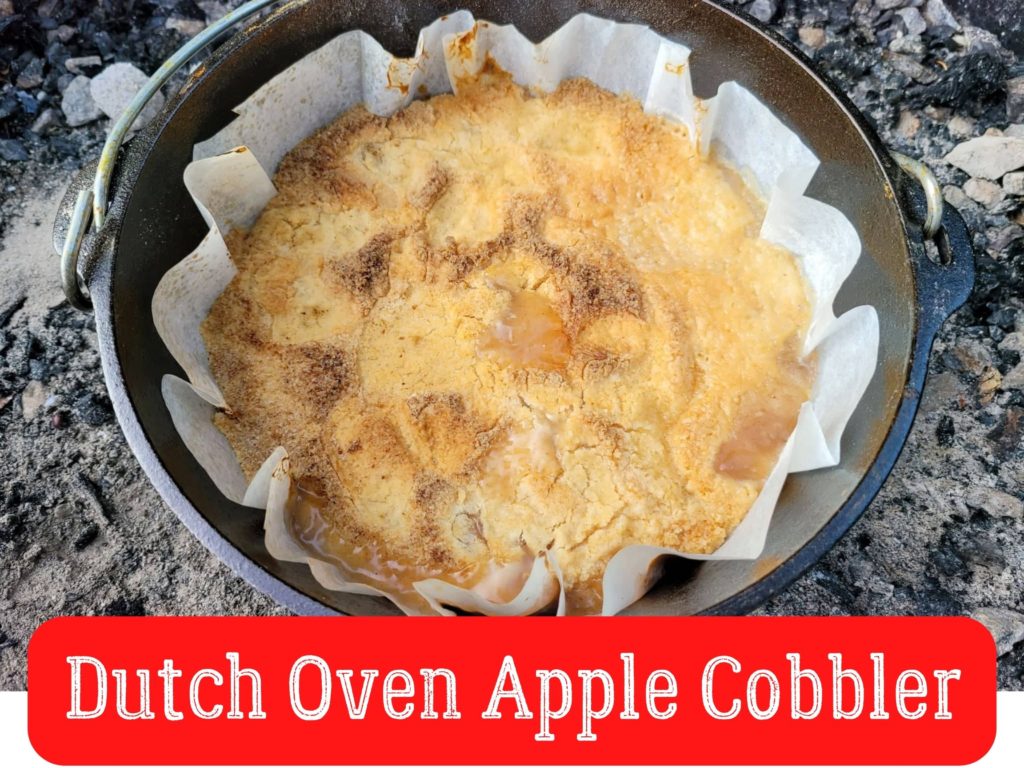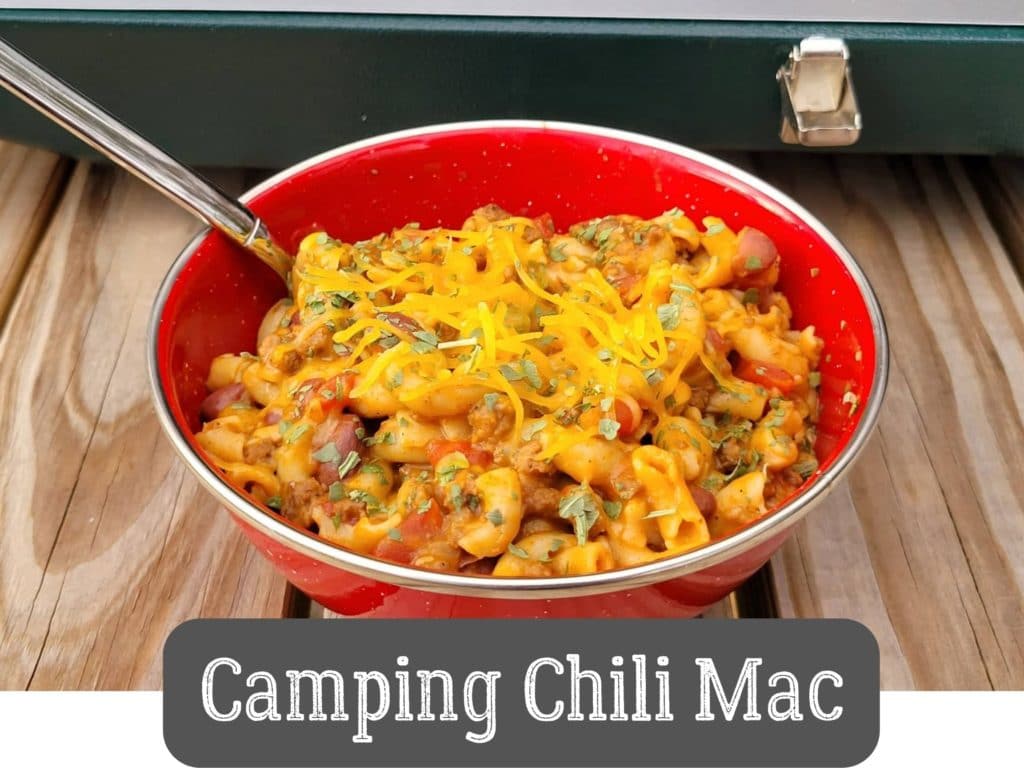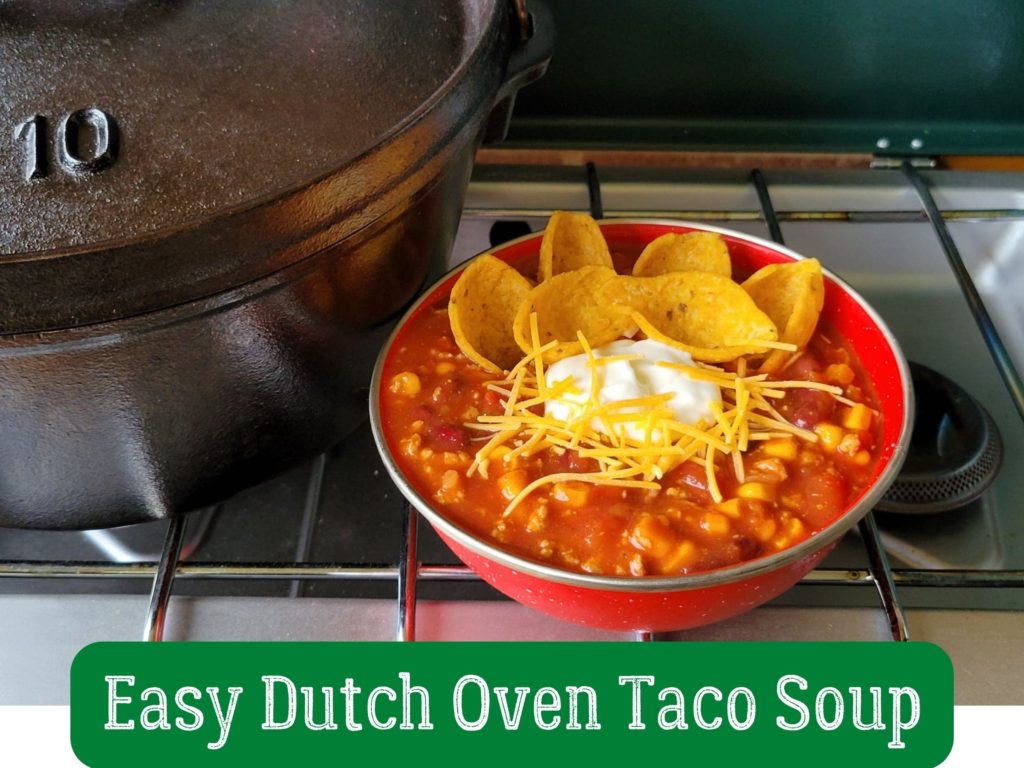For years, the classic cast iron dutch oven has been an essential piece of camp cooking gear. It’s not surprising, given their reputation for being incredibly versatile and durable. Dutch ovens are perfect for simmering stews, roasting meats, sauteing vegetables, baking delicious desserts, and so much more. They can also perform most of the same functions as a cast iron skillet, and the lid can be inverted and used as a griddle on many models. These helpful features make preparing camping meals more convenient and eliminate the need to bring additional cookware on your camping trip.
If you want to get started with camp cooking but don’t know what size dutch oven you should get, you’ve come to the right place. This guide will help you decide which size, model, and features to look for in a camp dutch oven.
What Is A Camp Dutch Oven?
The camp dutch oven is basically a cast iron pot with three legs on the bottom and a lid with an elevated rim. It typically has a handle for hanging over a fire via a tripod. The camp dutch oven’s legs raise it a couple of inches off the ground, providing room for charcoal or hot embers to be placed under the pot. This also helps prevent the coals from directly touching the bottom of the pot, which can cause food to burn due to the intense heat. The flanged lid keeps charcoal in place on top of it while cooking and helps prevent ashes from falling into your food when removing the lid.
Camp dutch ovens can be used for almost any cooking method that could be performed indoors. Here are several examples of ways to cook with a camp dutch oven:
- Simmering soups and stews
- Steaming rice and vegetables
- Boiling water for pasta
- Searing steaks
- Frying chicken
- Browning ground meats
- Sauteing vegetables
- Slow-cooking roasts
- Baking bread, biscuits, pies, cakes, and cobblers
- Melting cheese on pizza, nachos, and omelets
Camp vs. Indoor Dutch Ovens
Note that a camp dutch oven is different than an “indoor” or regular dutch oven, which has a flat bottom and a slightly rounded lid without a rim. As long as an indoor dutch oven is made from solid cast iron, isn’t enamel-coated, and doesn’t contain any wooden or plastic accent pieces, it can be adapted for use outside on a camp stove, grill, or supported by rocks to create space underneath for hot embers or coals.
However, the rounded lid makes holding coals on top difficult. Therefore, the indoor dutch oven isn’t ideal for baking, melting, or slow cooking, as it can only be heated from the bottom.


Be aware that enamel-coated dutch ovens are not recommended for use over an open fire or directly on hot charcoal. Enameled cookware may not withstand these high temperatures, which can cause the enamel coating to crack, chip, and flake off. An open fire can also permanently burn or stain the enamel. Check out this article for more information on why you shouldn’t use enameled dutch ovens for outdoor cooking.
What Size Dutch Oven Should I Bring Camping
The best dutch oven size for camping is either the 10-inch deep (5-quart) model or the 12-inch standard-depth (6-quart) model. Most camping recipes use these dutch oven sizes. For larger or smaller groups, camp dutch ovens ranging from 8 inches (2 quarts) to 16 inches (12 quarts) are available.
Standard versus Deep Camp Dutch Ovens
Dutch ovens are available in two different depths – standard (sometimes referred to as shallow), and deep. Each model is best suited for specific recipes and methods of cooking.
- The standard-depth dutch oven is best for cooking casseroles or small cuts of meat. It is also great for baking rolls, biscuits, and cakes because the heat will be distributed more evenly from the charcoal on the top and bottom of the dutch oven without the extra air space you’d have above the food when using a deep oven.
- The deep dutch oven is best for cooking soups and stews, as the extra depth helps prevent the liquid from boiling over. The deep oven is also great for frying fish or chicken, cooking larger roasts, ribs, beans, chili, loaves of bread, and recipes that require multiple layers, such as lasagna.
Best Size Dutch Oven For Two People
The best size camp dutch oven for two people is the 8-inch (2-quart) model. This size leaves plenty of room to cook a delicious camping meal but doesn’t take up much space. If you want to cook additional servings for leftovers, choose the 10-inch (4-quart) size.
Best Size Dutch Oven For A Family Of Four
The best size camp dutch oven for a family of four is either the 10-inch (4-quart), 10-inch deep (5-quart), or 12-inch (6-quart) model, depending on the number of servings each person will want.
Dutch Oven Capacity And Servings Chart
This chart is a helpful reference for comparing dutch oven sizes, capacities in quarts and cups, and the approximate number of people each size will serve.
| Dutch Oven Size | Capacity – Quarts | Capacity – Cups | Serves |
|---|---|---|---|
| 8-Inch | 2 Quarts | 8 Cups | 2-3 People |
| 10-Inch | 4 Quarts | 16 Cups | 4-6 People |
| 10-Inch Deep | 5 Quarts | 20 Cups | 5-7 People |
| 12-Inch | 6 Quarts | 24 Cups | 6-8 People |
| 12-Inch Deep | 8 Quarts | 32 Cups | 8-10 People |
| 14-Inch | 8 Quarts | 32 Cups | 8-10 People |
| 14-Inch Deep | 10 Quarts | 40 Cups | 10-12 People |
| 16-Inch | 12 Quarts | 48 Cups | 12-16 People |
Camp Dutch Oven Cooking Accessories
There are several tools and accessories that can make camp dutch oven cooking easier, safer, and more convenient. I use a combination of these items each time I go camping or cook with a dutch oven in my backyard fire pit, and they are truly helpful!
In addition to these accessories, knowing how to pack, store, and transport your cast iron dutch oven is important. Check out my article, How To Pack and Store Cast Iron Cookware For Camping for more information.
Cast Iron Dutch Oven Charcoal Temperature Chart
If you’re cooking with a cast iron camp dutch oven and using charcoal as the heat source, a dutch oven charcoal temperature chart is helpful for estimating the number of coals needed to reach the desired temperature.
Charcoal placement will also vary for frying, boiling, simmering, and roasting. The chart below is designed specifically for baking, as it requires the most heat precision. The following guidelines will help with other cooking methods:
- Frying / Boiling: Place all coals under the dutch oven.
- Roasting: Divide coals evenly between the top and bottom of the dutch oven in a 1:1 ratio.
- Simmering: Divide coals into a 4:1 ratio with most coals on the bottom.
In the temperature chart below, “top” and “bottom” indicate the number of coals to be placed underneath the dutch oven and on top of the lid.
I always find it helpful to prepare a few extra briquettes of charcoal beyond the “total” recommendation in case some are very small or disintegrate during preparation. (Not sure how to use a charcoal chimney to quickly and easily prepare your charcoal briquettes for cooking? Check out my helpful “How To Use A Charcoal Chimney Starter” article with step-by-step photos!)
Feel free to use this handy dutch oven charcoal temperature chart and download the printable version to reference when cooking.
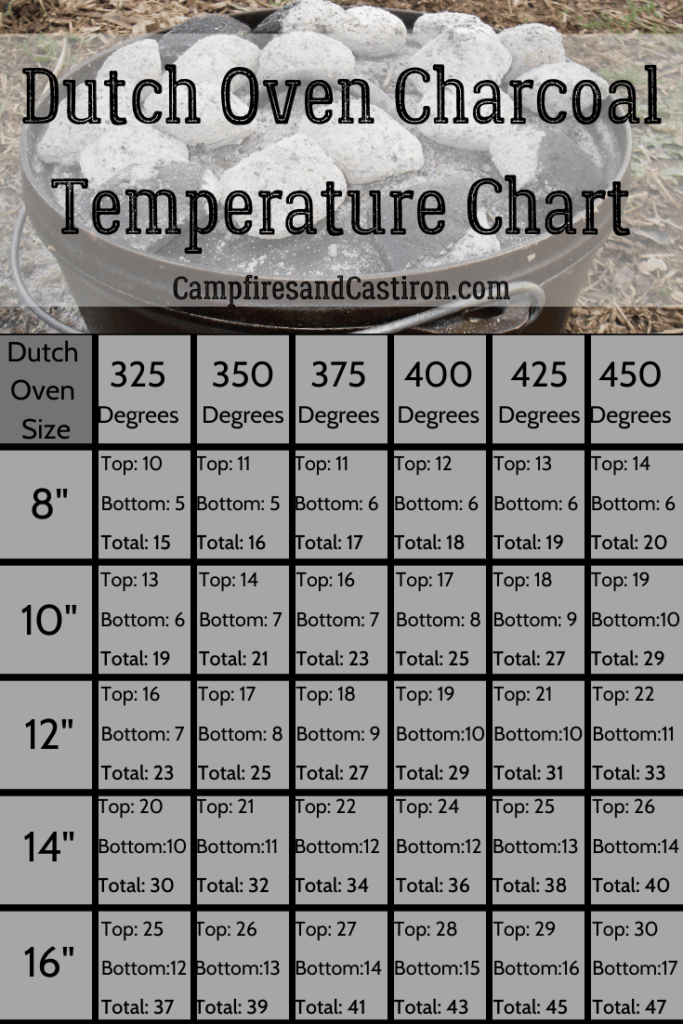
Summary
In summary, the most versatile sizes of camp dutch ovens for two to six people are the 10-inch (4-quart), 10-inch deep (5-quart), or 12-inch (6-quart) models. Personally, I use a Lodge 10-inch deep camp dutch oven for all of my recipes and I love it. I’ve never had trouble with soups or stews boiling over and I’ve been able to bake desserts, fry chicken, and cook layered lasagna with plenty of room. When I go camping and only have room for one dutch oven, that’s definitely the one I choose to take. This is also the same dutch oven used in all of my blog recipes.
Dutch Oven Camping Recipes
Now that you know how to choose the right size dutch oven for your next camping trip, it’s time to pick some delicious recipes to try! Here are a few of my favorite dutch oven camping recipes. They’re easy to make, they feature gluten and dairy-free modification options in the instructions, and they’re my go-to recipes on all of my camping trips. I hope you’ll enjoy them as much as we do!
This post may contain affiliate links. This means if you click on a link and make a purchase, I will receive a small commission, at no cost to you, that makes it possible for me to keep the Campfires and Cast Iron site up and running. Please see our disclosure policy for details.
